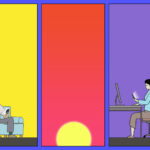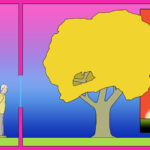Cognitive Processing Therapy (CPT) is a humane, brief, evidence‐based treatment for reducing symptoms of posttraumatic stress disorder and improving quality of life. It is effective when delivered individually or in groups, in‐person or via telehealth.
I am a rostered provider of Cognitive Processing Therapy (CPT) for PTSD, I am trained to offer this research-based protocol to help alleviate trauma symptoms and assist people in regaining their lives after traumatic experiences.
Over half of U.S. women and 60% of U.S. men have experienced at least one traumatic event in their lives. Over 70% of people with substance use concerns have experienced trauma.
Trauma symptoms can be troubling to individuals for months, even years after the event. Supportive, healing therapies are available to assist people with trauma and post-traumatic stress disorder.
People with trauma may hesitate to engage in therapy, even to dread it. Understandably, they wish to avoid the pain of re-experiencing the trauma. Research has shown that they are, indeed, correct to avoid reliving the trauma. What research has found is that examining what one thinks as a result of experiencing the trauma – not reliving the trauma itself – is what helps people recover.
According to this 2020 study, even if a person experiences other challenges – such as depression – addressing trauma first may reduce other symptoms. One of the authors stated in this interview, “Facing one’s trauma is understandably very difficult, but our findings suggest that trying to ‘ease’ into this work and working on depression first might not in fact help clients as much as people would expect.”
Please know I will honor your experience and do my best to use CPT and other evidence-based protocols to help you ease symptoms and move forward.
- Here’s the Cognitive Processing Therapy session outline for those who wish to get started, either through working with a counselor or self-administering the protocol using the manual.
- Is online Cognitive Processing Therapy a fit for me?
- Self-help guide to reducing trauma symptoms
More About Cognitive Processing Therapy
Cognitive Processing Therapy (CPT) is a form of cognitive behavioral therapy (CBT) offering assistance to people continuing to have troubling symptoms after traumatic experiences, whether the events occurred recently or long ago. Formerly, treatment for trauma focused on attempting to desensitize a person to the past through reliving it. We now know through brain studies that this approach may actually deepen trauma symptoms. In contrast, through Cognitive Processing Therapy, individuals are asked to examine the thinking and beliefs that resulted from the traumatic experience, not to recount the experience. A humane, skills-focused approach, CPT has been researched extensively and has a strong evidence base for reducing symptoms of Post-Traumatic Stress Disorder (PTSD).
CPT is a recommended treatment for PTSD by the Veterans Administration and the American Psychological Association (APA). Here’s more about CPT from the APA.
“This American Life,” a weekly public radio program, began featuring Cognitive Processing Therapy (CPT) in Ten Sessions on August 23, 2019. The enthusiastic tagline is: “What if someone told you about a type of therapy that could help you work through unhealed trauma in just ten sessions? Some people knock through it in two weeks. Jaime Lowe tried the therapy—and recorded it.” While some people respond quickly to CPT and experience comprehensive symptom reduction – to the point they no longer meet criteria for a PTSD diagnosis – others simply experience relief from the most troubling symptoms of trauma.
CPT was featured in the New York Times in 2013.
About Cognitive Processing Therapy from the founders’ site:
“Cognitive Processing Therapy (CPT) is a cognitive-behavioral therapy (treatment that focuses on thoughts and feelings for Posttraumatic Stress Disorder, or PTSD, and related conditions. PTSD can develop when an individual experiences a traumatic event such as physical and sexual abuse or assault, accidents, threats, military combat, or being a witness to violence or death. CPT focuses on the connections between thoughts, feelings, behavior and bodily sensations. CPT is an evidenced based therapy which means that it has been proven to be effective through rigorous scientific research. CPT provides a way to understand why recovery from traumatic events is difficult and how symptoms of PTSD affect daily life. The focus is on identifying how traumatic experiences change thoughts and beliefs, and how thoughts influence current feelings and behaviors. An important part of the treatment is addressing ways of thinking that might keep individuals ‘stuck’ and get in the way of recovery from symptoms of PTSD and other problems.”
Counselors and participants use Cognitive Processing Therapy for PTSD: A Comprehensive Manual by Patricia A. Resick, Candice M. Monson, and Kathleen M. Chard, Guillford Press, 2016.
Online CPT training:
- CPTWeb: A web-based learning course for Cognitive Processing Therapy, from the Medical University of South Carolina. Free, online training in foundations of CPT published in 2009. Free, registration required. Manual published in 2016 contains revisions and updates.
- Cognitive Processing Therapy (CPT) for Posttraumatic Stress Disorder (PTSD) Enhanced Practice from Train Learning Network. Free, registration required.
- Seminar with Dr. Patricia Resick I attended in 2019. Registration and fee required.
- Forthcoming: Cognitive Processing Therapy: An Evidence-Based Approach to Treat PTSD and Related Conditions from PESI. Registration and fee required.
“The just-world belief holds that good things happen to good people, that bad things happen to bad people, and that the world should be a fair and just place. This belief emanates from the desire to find an orderly, cause-effect association between an individual’s behavior and the consequences of that behavior…this is a hard-wired, evolutionary need of humans to predict and control events in order to survive.” (65)
– Resick, et al., Cognitive Processing Therapy for PTSD: A Comprehensive Manual, 2017
Here’s an interview with veterans who participated in group CPT.
Here’s a brave and candid narrative on YouTube by a person who engaged in CPT.
On this page of recommended books are contemporary examples of real and fictional individuals examining and challenging beliefs they hold about themselves, and beliefs held about them by others, not unlike the process undertaken in CPT. Reading a selection of these books may be interesting to people engaging in CPT.
When people are asked to challenge the beliefs they have surrounding trauma, they may be uncertain about criteria to use. They may have trouble conceiving of alternate possibilities. Questions might arise such as “How do I know what should or might have happened instead?” Considerations of various concepts of human rights can be helpful. A few are listed below with related excerpts.
Give Your Child the Tools to Recognize Sexual Abuse
United Nations Universal Declaration of Human Rights
- Article 3. Everyone has the right to life, liberty and security of person.
- Article 5. No one shall be subjected to torture or to cruel, inhuman or degrading treatment or punishment.
- Article 9. No one shall be subjected to arbitrary arrest, detention or exile.
United Nations Convention on the Rights of the Child
- Article 19 (Protection from all forms of violence): Children have the right to be protected from being hurt and mistreated, physically or mentally. Governments should ensure that children are properly cared for and protect them from violence, abuse and neglect by their parents, or anyone else who looks after them. In terms of discipline, the Convention does not specify what forms of punishment parents should use. However any form of discipline involving violence is unacceptable. There are ways to discipline children that are effective in helping children learn about family and social expectations for their behaviour – ones that are non-violent, are appropriate to the child’s level of development and take the best interests of the child into consideration. In most countries, laws already define what sorts of punishments are considered excessive or abusive. It is up to each government to review these laws in light of the Convention.
The Challenging Questions Worksheet coaches individuals in how to use Socratic dialogue on their own. Socrates asked his students questions that helped them discover 1) assumptions and hypotheses from which they had derived conclusions, 2) the logic and reasoning they had used to build these conclusions, and 3) the definitions of the terms they were using. Once people become aware of these components, they can define terms precisely, examine their thinking in terms of facts, data, and evidence, and detect logical fallacies in how they’ve built their arguments. With self-kindness and matter-of-factness, people can use Socratic dialogue to approach – rather than to avoid – the reality of what occurred, ease the suffering caused by beliefs that have become “stuck points,” and conceive of next steps for themselves based on their own deep understandings and values.
Here is a link to our in-house CPT Guide.
Here is a link to our CPT Clients page.
If you are interested in engaging in Cognitive Processing Therapy for trauma, either in individual or group sessions, or in a brief, intensive form, please feel free to contact me. I would be delighted to work with you.
Last updated 2/16/23

